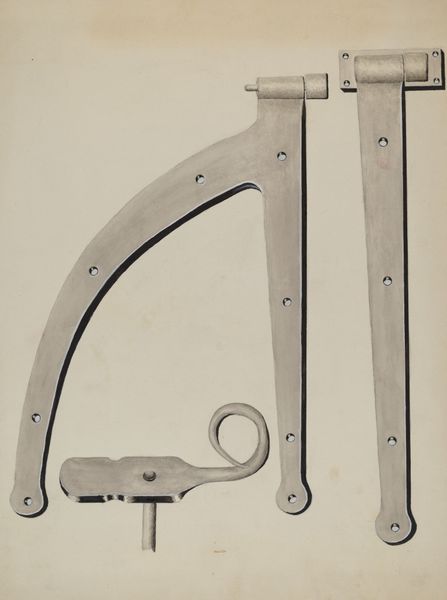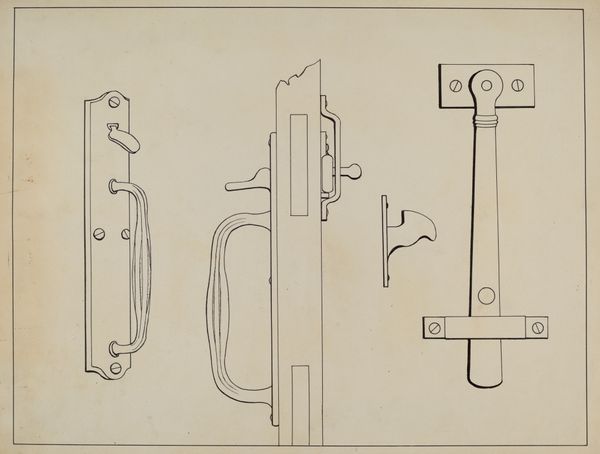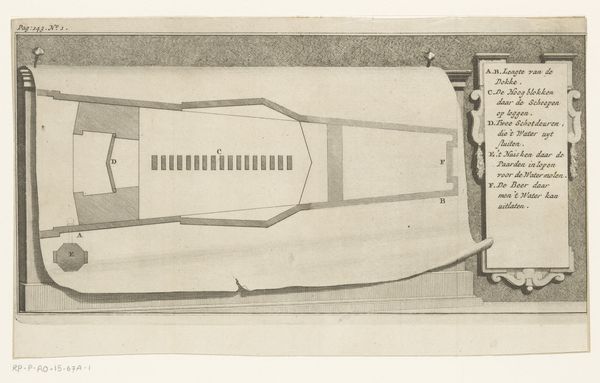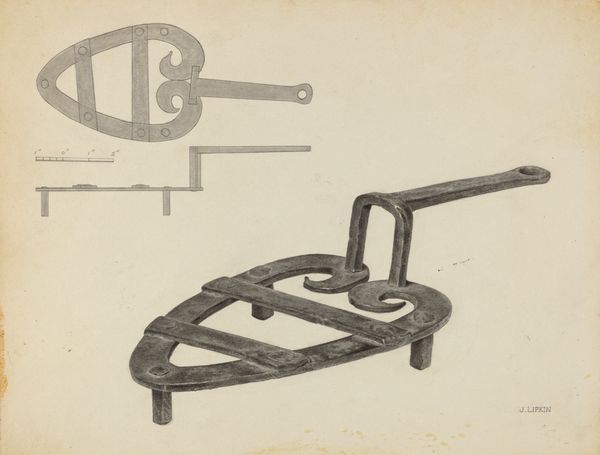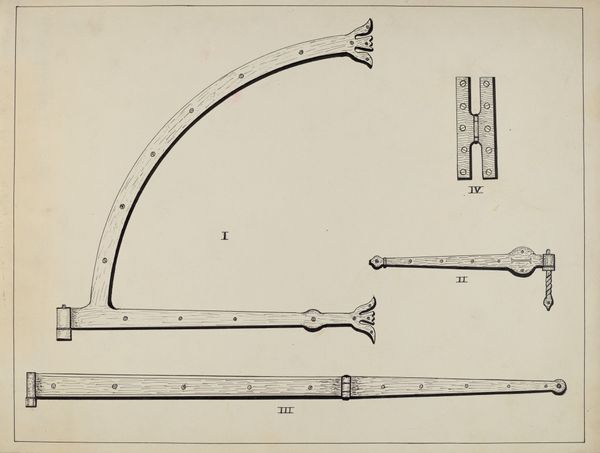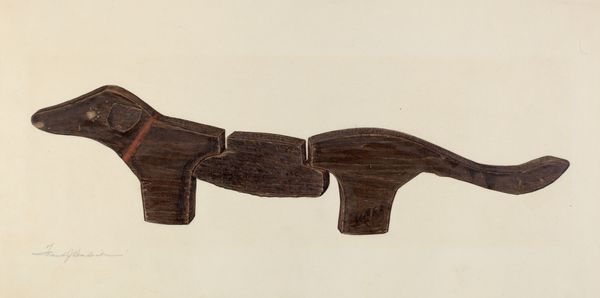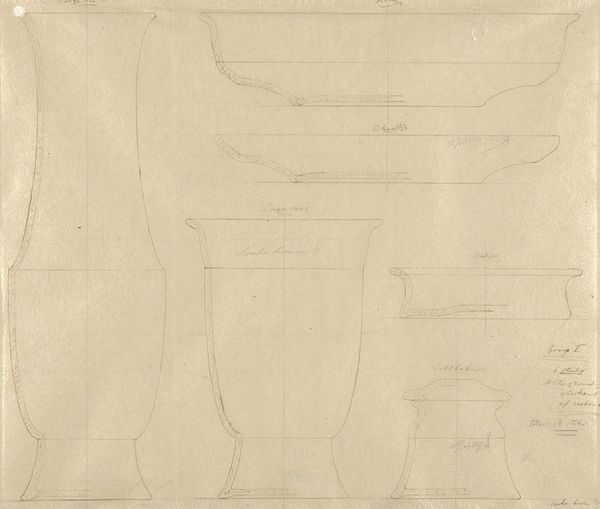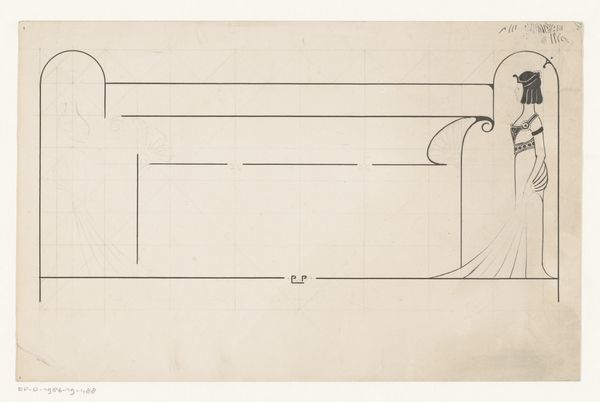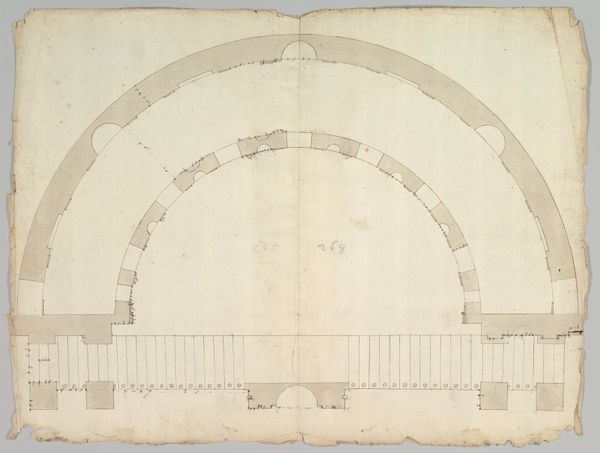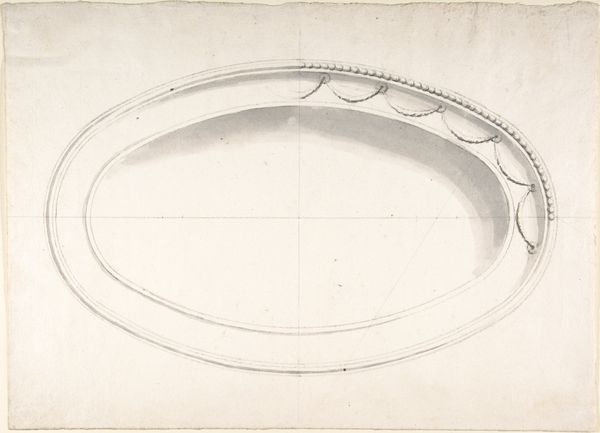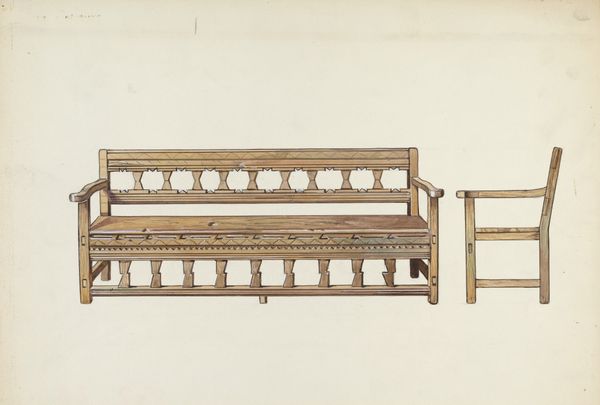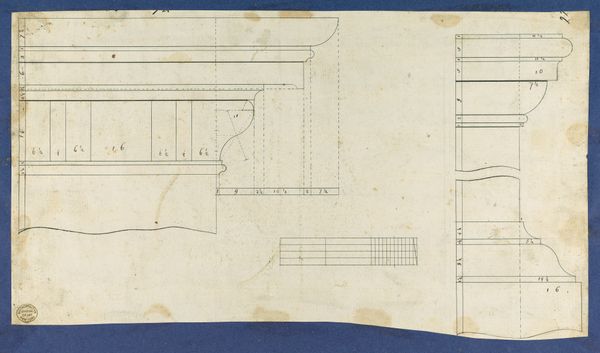
drawing, graphite
#
drawing
#
geometric
#
graphite
#
realism
Dimensions: overall: 27.1 x 35.9 cm (10 11/16 x 14 1/8 in.)
Copyright: National Gallery of Art: CC0 1.0
Editor: This is James M. Lawson's "Door Hinges," a graphite drawing from around 1936. There's something so stark and utilitarian about these meticulously rendered hinges. What stories can you read into them? Curator: These aren't just hinges, they're artifacts of a specific moment, reflecting the socio-economic conditions of the 1930s. Think about the labor, the craft, the communities these hinges would have been a part of. The detailed rendering elevates them beyond mere function, almost like portraits. What do you make of that tension between function and representation? Editor: I hadn't thought about it that way. I guess I saw them as more purely formal. Curator: But formalism always has a context! The decision to depict these objects with such care points to a deeper narrative. Perhaps a commentary on the dignity of labor during the Depression, or an exploration of gendered labor. How might viewing these hinges through the lens of gender shift your perspective? Whose labor do you see when you look at this drawing? Editor: That's a fascinating question. It makes me wonder who was crafting these hinges, and the economic realities of their lives. Curator: Exactly! Art, even in the seemingly mundane, engages with power dynamics and social structures. Recognizing this is the first step to challenging conventional readings and broadening the scope of art historical discourse. Editor: It definitely gives me a lot to think about – how art can draw attention to often-unseen labor and history. Curator: Precisely. It's about questioning what we take for granted and seeing the potential for resistance and agency within seemingly simple objects.
Comments
No comments
Be the first to comment and join the conversation on the ultimate creative platform.
